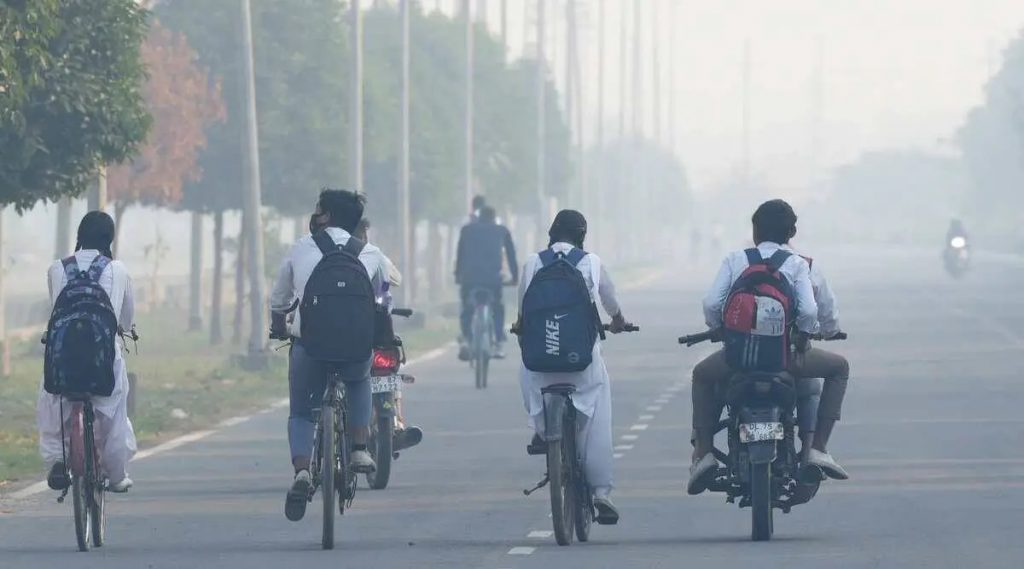Education & Career Trends: November 25, 2024
Curated by the Knowledge Team of ICS Career GPS

This blog was created using insights from multiple sources, including timesofindia.com & hindustantimes.com
As air quality levels in India, particularly in cities like Delhi, often reach hazardous levels, it is crucial for students to take proactive measures to protect their health while attending classes. Prolonged exposure to poor air quality can lead to respiratory problems, fatigue, and decreased focus, which may adversely affect both health and academic performance. By adopting practical steps, such as wearing protective masks, staying hydrated, and monitoring air quality indexes daily, students can safeguard their well-being. Schools and institutions should also consider measures like installing air purifiers and organizing awareness programs to create a healthier learning environment. Here are some effective steps students can implement to safeguard themselves against the dangers posed by poor air quality:
1. Stay Informed About Air Quality Levels
- Use AQI Monitoring Apps: Regularly check air quality indices through apps like the Sameer app or websites that provide real-time AQI data. This will help you plan your activities according to the air quality levels.
- Follow Local News: Keep an eye on local news updates regarding pollution levels and any announcements regarding school closures or shifts to online classes.
2. Limit Outdoor Activities
- Avoid Outdoor Exposure: On days when the AQI is categorized as ‘poor’ (201-300) or ‘very poor’ (301-400), limit outdoor activities, especially strenuous exercises like sports or jogging.
- Choose Indoor Alternatives: Opt for indoor activities such as studying, reading, or participating in online classes when air quality is poor.
3. Use Protective Gear
- Wear Masks: When going outdoors during high pollution days, wear N95 or similar masks that can filter out harmful particulate matter (PM2.5 and PM10).
- Consider Air Purifiers: If possible, use air purifiers in your home or dormitory to reduce indoor pollution and improve air quality.
4. Create a Clean Indoor Environment
- Ventilation: Ensure good ventilation indoors by using exhaust fans and keeping windows closed during high pollution days to prevent outdoor air from entering.
- Indoor Plants: Incorporate indoor plants known for their air-purifying qualities, such as spider plants and peace lilies, to help improve indoor air quality.
5. Stay Hydrated and Maintain a Healthy Diet
- Drink Plenty of Water: Staying hydrated can help your body cope better with pollution.
- Nutritious Foods: Consume a diet rich in antioxidants—fruits and vegetables can help combat the effects of pollution on your body.
6. Participate in Awareness Campaigns
- Engage with Community Initiatives: Join local environmental groups or school initiatives aimed at raising awareness about air quality issues and advocating for cleaner air policies.
- Educate Peers: Share information about the importance of protecting oneself from poor air quality with classmates and friends.
7. Advocate for Online Learning Options
- Support Online Classes During High AQI Levels: Encourage your educational institution to offer online classes when AQI levels are dangerously high. Many schools have already shifted to online learning during severe pollution events.
8. Consult Health Professionals
- Seek Medical Advice: If you experience symptoms such as coughing, throat irritation, or shortness of breath during high pollution periods, consult a healthcare professional for guidance.
Conclusion
By taking these proactive steps, students can significantly reduce their exposure to harmful pollutants and protect their health while continuing their education amidst challenging air quality conditions. Staying informed and prepared is key to navigating the risks associated with high AQI levels in India.
…
Have you checked out yesterday’s blog yet
4 Steps to Master Your Need to Achieve
(Disclaimer: The opinions expressed in the article mentioned above are those of the author(s). They do not purport to reflect the opinions or views of ICS Career GPS or its staff.)
Like this post? For more such helpful articles, click on the button below and subscribe FREE to our blog.



